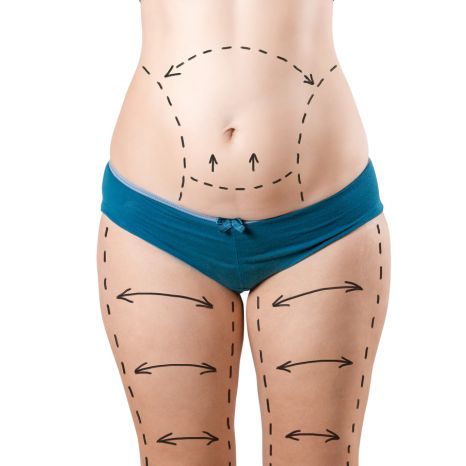Liposuction
The best liposuction candidates have fat excess in specific regions of the body

Liposuction – Suction-Assisted Lipectomy
Liposuction or suction-assisted lipectomy is a surgical technique that removes unwanted deposits of adipose tissue, fat, from specific areas of the body, including the face and neck, upper arms, trunk, abdomen, buttocks, hips, and thighs, and the knees, calves, and ankles.
This is not a substitute for weight reduction, but a method for removing localized deposits of fatty tissue that do not readily respond to diet or exercise.
Liposuction may be performed as a primary procedure for body contouring or combined with other surgical techniques such as facelift, abdominoplasty, or thigh lift procedures to tighten loose skin and supporting structures.
The best candidates for liposuction are individuals of relatively normal weight who have excess fat in particular body areas. Having firm, elastic skin will result in a better final contour after liposuction. Skin that has diminished tone due to stretch marks, weight loss, or natural aging will not reshape itself to new contours and may require additional surgical techniques to remove and tighten excess skin. Body-contour irregularities due to structures other than fat cannot be improved by this technique.
Liposuction by itself will not improve areas of dimpled skin known as “cellulite.” Liposuction surgery is performed by using a hollow metal surgical instrument known as a cannula that is inserted through multiple small skin incisions and is passed back and forth through the area of the fatty deposit. The cannula is attached to an aspirator, a vacuum source, which provides the suction needed to remove the fatty tissue.
There are a variety of different techniques used by plastic surgeons for liposuction and care following surgery. Liposuction may be performed under local or general anesthesia.
The tumescent liposuction technique involves the infiltration of fluid containing a dilute local anesthetic and epinephrine into areas of fatty deposits. This technique can reduce discomfort at the time of surgery, blood loss, and post-operative bruising and discomfort.
Support garments and dressings are worn to control swelling and promote healing.
Next Steps…
To learn more about a procedure or book a consultation

